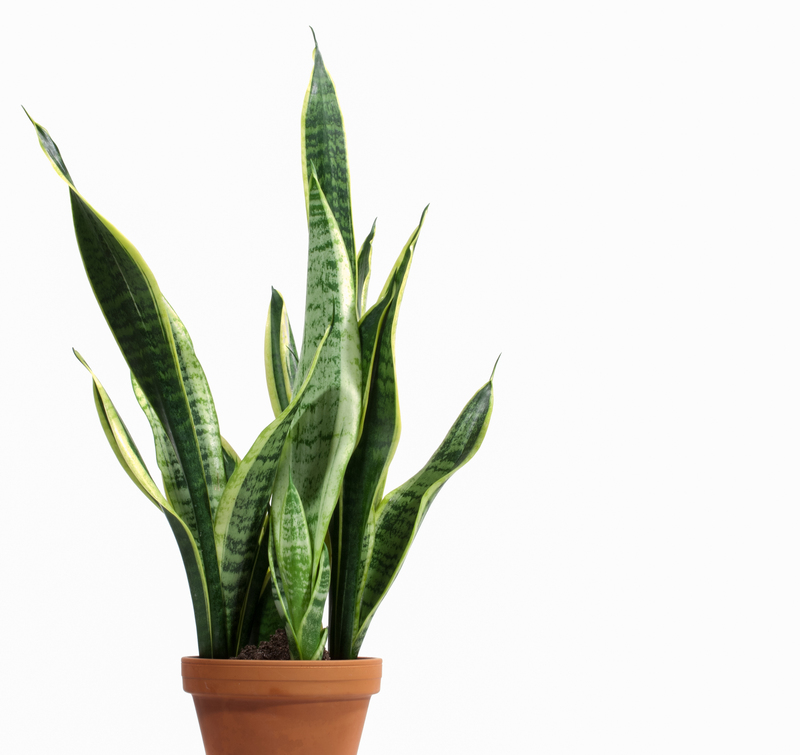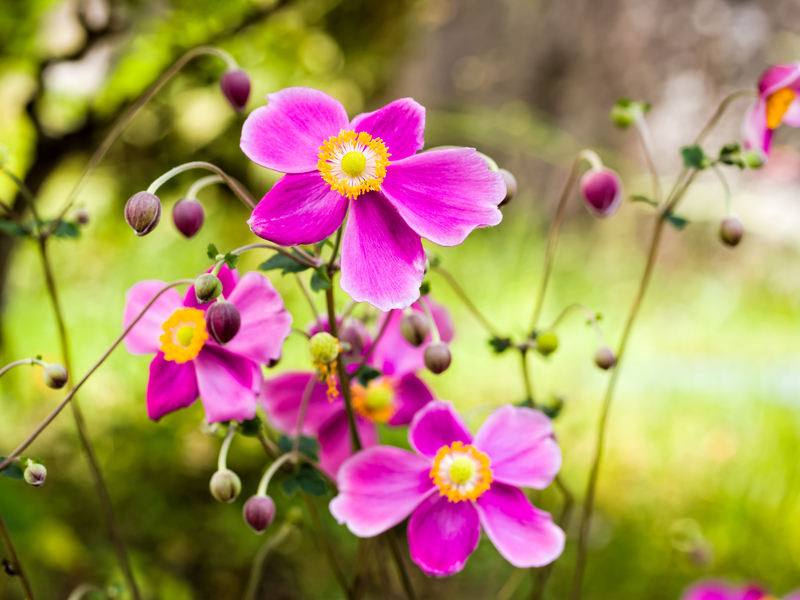Comprehensive Orchid Care Strategies
Posted on 03/09/2025
Comprehensive Orchid Care Strategies: The Ultimate Guide to Healthy, Blooming Orchids
Orchids, renowned for their exotic beauty and intricate blooms, have fascinated gardeners and plant enthusiasts for centuries. However, orchids have also earned a reputation for being delicate and finicky. Thankfully, with comprehensive orchid care strategies, you can nurture healthy, thriving plants that reward you with cascading flowers year-round. This article will delve into best practices for orchid care, from understanding different orchid types to detailed techniques for watering, feeding, repotting, and troubleshooting common problems.

Understanding Orchid Varieties and Their Unique Needs
Before diving into detailed orchid care strategies, it's crucial to understand that orchids make up the largest family of flowering plants. With over 25,000 species, their needs can vary significantly. However, most orchids commonly grown as houseplants fall into a few main categories:
- Phalaenopsis (Moth Orchids): The most popular indoor variety, known for their long-lasting blooms and beginner-friendly demeanor.
- Cattleya: Whether you love their flamboyant flowers or their citrusy scent, Cattleyas require more sunlight but are otherwise easy to manage.
- Dendrobium: This diverse genus includes orchids of varying requirements, often prized for long sprays of blooms.
- Oncidium: Nicknamed "dancing lady orchids," Oncidiums thrive in bright, airy conditions and produce masses of small blooms.
Comprehensive care for orchids starts with learning about your specific plant. Always identify the exact species or hybrid for optimal results.
Ideal Environment: The Foundation for Thriving Orchids
Light Requirements
Light is perhaps the single most important factor in successful orchid care. Most orchid varieties prefer bright, filtered light, similar to what they would receive in their native habitats beneath forest canopies.
- Phalaenopsis: Need medium, indirect light. An east or west-facing window is ideal, but too much direct sun can scorch leaves.
- Cattleya & Oncidium: Prefer more light. South-facing windows with sheer curtains often work well.
- Tip: If leaves are dark green, your orchid might need more light; yellowish-green means it's receiving the right amount.
Temperature and Humidity
In general, orchids prefer moderate temperatures: 65-75?F (18-24?C) during the day, 55-65?F (13-18?C) at night. Consistency is key, as sudden temperature drops can hinder blooming.
- Orchids also love humidity: aim for 50% to 70% humidity.
- Use a humidity tray, misting, or a room humidifier in dry climates.
- Avoid placing orchids near radiators, air conditioners, or drafty windows.
Air Circulation
Orchids are susceptible to rot and fungal problems if the air becomes stagnant. Ensure gentle air movement:
- Use an oscillating fan set on low.
- Open windows occasionally, but avoid cold drafts.
- Avoid excessive crowding among your orchid pots.
Watering Orchids: The Delicate Art
Overwatering is the most common cause of orchid decline. Orchids are epiphytes (air plants) in the wild, growing on trees with roots exposed to air and brief rains.
How Often to Water Your Orchid
- Phalaenopsis and many others: Every 7-10 days during active growth, slightly less during cooler months.
- The potting medium should dry out slightly between waterings. Insert a finger to check moisture before watering.
- Always use room temperature, non-chlorinated water to avoid shocking the roots.
Effective Watering Techniques
- Water in the morning so excess moisture evaporates by evening.
- Avoid letting water sit in the crown of the plant (the leaf base), as this can encourage rot.
- Let water drain thoroughly. Never let orchid pots sit in water.
Optimal Orchid Potting Mix and Containers
Choosing the Right Orchid Potting Medium
Orchid roots need air as much as they need water. Choose a medium that provides structure and aeration:
- Bark mix: Ideal for Cattleya, Oncidium, and many Phalaenopsis. Slow to rot and excellent for drainage.
- Sphagnum moss: Holds moisture better; best for smaller, younger orchids or those in drier climates.
- Orchid mix blends: Commercial mixes provide a balance of bark, perlite, charcoal, and moss.
Pot Selection and Drainage
- Always use pots with ample drainage holes.
- Transparent orchid pots can help monitor root health and moisture, as well as support the plant's light requirements.
Fertilizing Orchids for Vigorous Growth and Blooms
Feeding orchids properly promotes not just healthy leaves and roots, but also profuse and regular blooming.
Types of Orchid Fertilizers
- Use a balanced, water-soluble fertilizer: 20-20-20 works well for most types.
- Choose a fertilizer made specifically for orchids, as they are free of urea and will not burn roots.
Fertilizing Schedule and Practices
- "Weakly, weekly": Dilute the fertilizer to quarter or half strength and apply every week during the active growing season.
- Flush the potting medium with plain water once a month to prevent salt buildup.
- Reduce feeding in winter or when the orchid is dormant.
How to Repot Orchids Properly
Repotting is an essential aspect of comprehensive orchid care. Over time, the potting medium breaks down and begins to suffocate roots or support pathogens. Knowing when and how to repot your orchid will keep it healthy and productive.
Signs Your Orchid Needs Repotting
- The potting medium is breaking down, looks soggy, or smells unpleasant.
- Roots are growing out of the pot or appear shriveled and brown.
- The orchid has outgrown its container and is top-heavy.
Steps to Repot an Orchid
- Gently remove the orchid and loosen the roots. Rinse off old medium.
- Trim dead or rotten roots with sterilized scissors.
- Position the orchid in a clean pot, spreading roots apart. Add fresh orchid medium.
- Water sparingly for a week, allowing the plant to settle and heal any minor root damage.
Pruning & Grooming for Health and Beauty
Proper pruning can prompt a second bloom spike and keeps your orchid looking tidy.
- After blooms fade, cut the flower spike back to the first strong node for a possible secondary bloom.
- Remove yellowing leaves or dried flower stems with clean, sharp scissors.
- Never cut healthy green roots extending outside the pot; these are normal for epiphytic orchids.
Orchid Pests and Disease Management: Prevention and Treatment
Common Orchid Pests
- Aphids, mealybugs, and scale: Remove with a damp cloth or treat with insecticidal soap.
- Spider mites: Usually a sign of dry air - increase humidity and rinse leaves with water.
- Snails and slugs: Pick off by hand or use barriers around pots.
Preventing Orchid Diseases
- Root rot and crown rot: Avoid overwatering and keep leaves dry.
- Fungal and bacterial spots: Improve air circulation and remove infected tissue immediately.
- Use only sterilized tools to prune or repot plants to prevent cross-contamination.
Promoting Robust Blooms Year After Year
Getting your orchid to rebloom can be the ultimate challenge - and proof of your orchid care strategies at work!
- Temperature shift: Trigger spikes by exposing your orchid to cooler nighttime temperatures (about 10?F lower than daytime) for 2-4 weeks in autumn.
- Maintain bright, indirect light and steady feeding during the growing season.
- Don't move the plant once a spike forms, as orchids are sensitive to environmental changes.
Comprehensive Orchid Care: Troubleshooting and FAQ
Why Are My Orchid Leaves Turning Yellow?
This can indicate several issues: overwatering, insufficient light, or natural leaf ageing. Examine roots and check your watering schedule for problems.
What If My Orchid Won't Bloom?
Lack of blooms may be caused by too little light, insufficient feeding, or the plant needing a rest period. Consider a temperature drop at night to stimulate spike formation.
How Can I Revive a Dying Orchid?
- Trim away any rot or dead roots.
- Repot if the medium is decomposing.
- Provide consistent humidity, filtered light, and avoid direct sun until recovery is underway.

Advanced Strategies for Dedicated Orchid Growers
Creating a Mini Orchid Greenhouse
- Construct a small grow-box or use an aquarium with ventilation for high-humidity-loving species.
- Supplement with grow lights if natural sunlight is insufficient.
- Group orchids together to create a 'microclimate' with higher humidity.
Experimenting with Advanced Propagation
- Try dividing mature plants when repotting, taking care to include several healthy roots for each division.
- Some orchids produce 'keikis' (baby plants) along flower spikes; these can be rooted and grown separately.
Your Orchid Success Story Starts Here
Caring for orchids can be deeply rewarding, transforming your indoor spaces into lush, flowering retreats. By following these comprehensive orchid care strategies, you'll overcome common challenges and enjoy the splendor of vibrant, blooming orchids year after year. Remember, patience and observation are key. As you get to know your orchids, you'll learn to tailor your approach to each individual's needs--leading to healthier plants and show-stopping floral displays.
With consistent, attentive care, your orchids can flourish and become the centerpiece of your home or garden.
- Identify your orchid for targeted care.
- Provide ideal light, temperature, and humidity.
- Master the art of watering and feeding.
- Repot and prune for lasting health.
- Watch for pests and act quickly to prevent problems.
Whether you're a new enthusiast or a seasoned grower, mastering orchid care strategies will unlock years of beauty and enjoyment. Happy growing!
```
